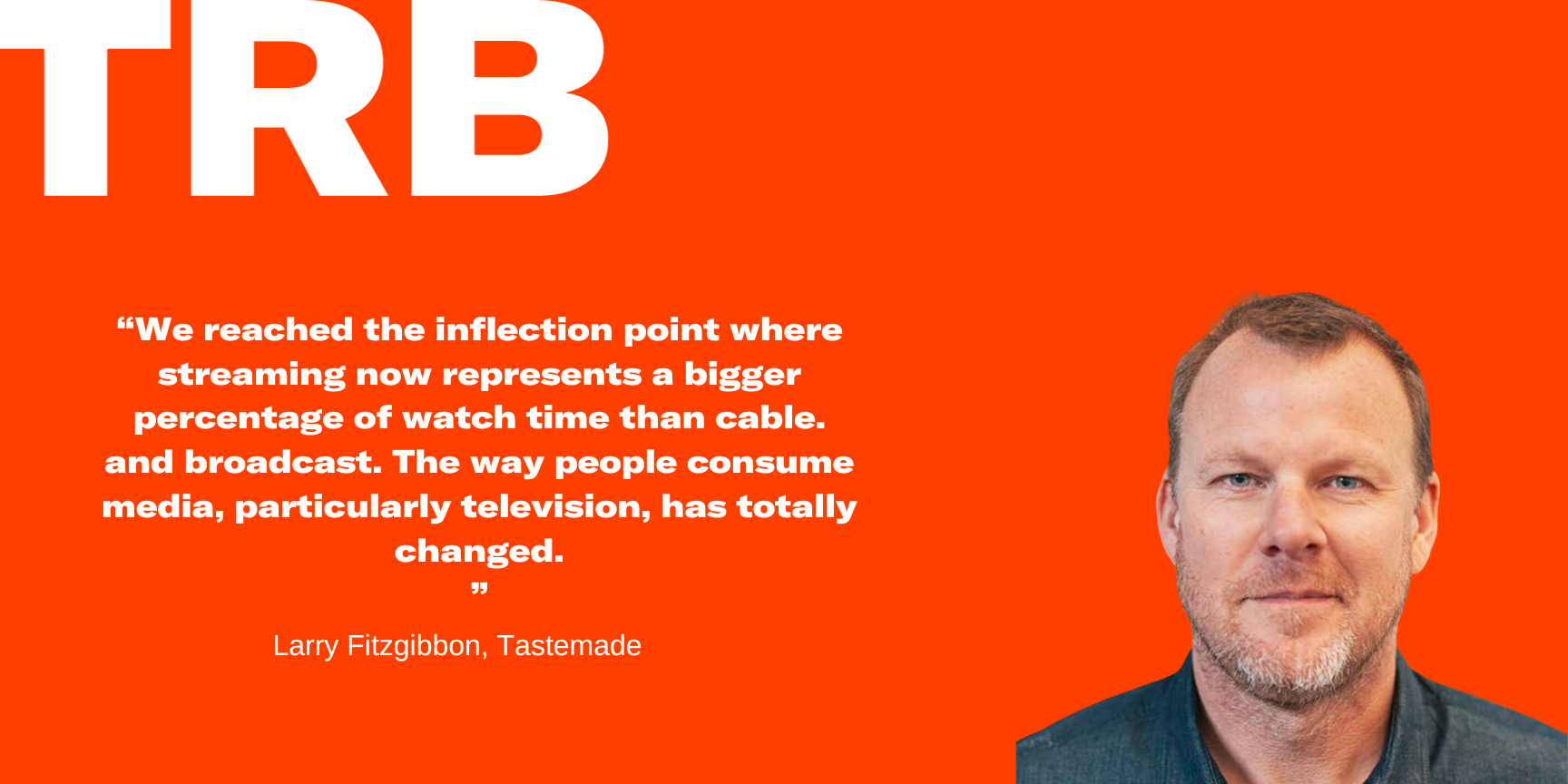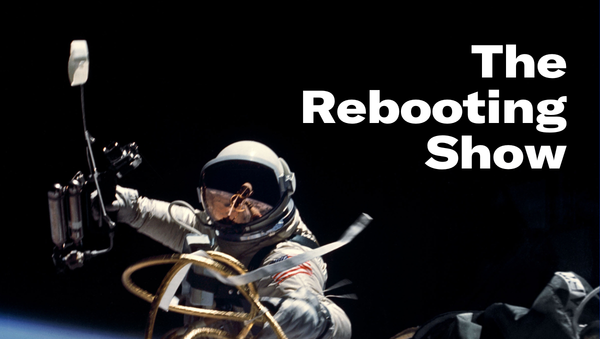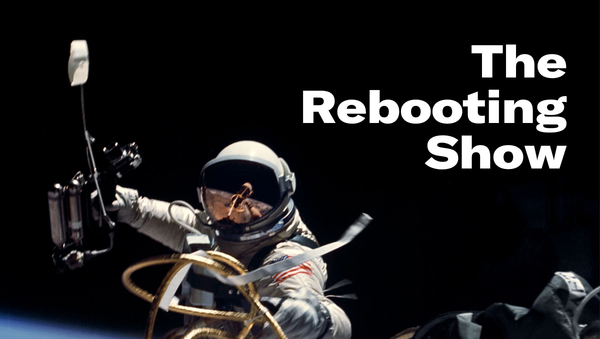Scenes from CES
36 hours in Vegas

The rocky digital ad market has put even more focus on the need for publishers to build direct reader revenue businesses. With the support of BlueConic, The Rebooting is holding its first online forum to discuss the challenges and opportunities that lie ahead for publishers’ subscription businesses. On Thursday, Jan 25, from 1pm-2pmEST, I’m going to be joined by Bloomberg Media Chief Digital Officer Julia Beizer and Puck Chief Strategy Officer Max Tcheyan to discuss:
- The myth of peak subscription
- The shift to LTV as a North Star
- The prospects for smart bundles
36 hours in Las Vegas

It’s a truism of any media industry “tentpole” event, whether Cannes, Art Basel or CES that the real action takes place in private. CES draws some 130,000 people to gawk at the latest gadgets. For nearly 60 years, it has served an essential role for the tech industry to lay out its roadmap for the year.
At some point, the media and marketing industry — two halves of the same coin — followed, which is fitting. The media world is grafted onto the tech industry, which sets the pace for others to follow. Of course, most executives spend little to no time on the show floor — there’s a vibrant cottage industry of giving execs curated tours to get that out of the way — and most of their time in meetings and dinners and cocktails. It serves an essential role to kick off the year, with many road warriors making the quick turn for the IAB Annual Leadership Meeting at the end of the month.
More side events are popping up at CES. Brand Innovators held a packed gathering that featured Mark Cuban and Linda Yaccarino, who managed to emerge unscathed compared to her last public appearance. Overall, I’m impressed with how ubiquitous BI has become. Industry events tend to have lifecycles – there was a time when Ad:tech was a must-attend – and BI is on the upswing.
Beyond PR, the real action of the media CES is at the Aria, where armies of temps roam holding signs for various Lumascape logos. The suites themselves tend to be rather quotidian, with living furniture removed in favor of several rooms for business meetings. It’s hardly glamorous. This is why people complain about going to Cannes and CES but mean it for CES.
Vegas is apparently an acquired taste. I rarely talk to people who profess to love Vegas, but it has the charm of being ludicrously improbable. You can be frustrated being lost in a casino or appreciate how absurd the entire setup is as you squeeze by an Elvis impersonator impersonating AdTech God.
The headlines from CES are mostly around AI. I heard murmurs of approval of LG’s transparent TVs. AI gadgets like the Rabbit device got mixed reviews. From a media perspective, the most impressive new tech I saw was the Sphere. Say what you want about ad blindness but the Sphere is unique enough to get off the spreadsheet. One person told me a Sphere ad costs $450,000 per day. Good to see premium still exists.
Media execs I talked to during my whirlwind 36 hours in Vegas were cautiously optimistic for, if not a banner year, at least an improvement from annus horribilis. In the Aria lobby, I ran into an exec who moved to the tech side who counted themselves lucky for leaving behind a company in terminal decline. A veteran agency exec onto day 4 in Vegas — a fraught situation in the best of times — wondered if they made the right career choice, comparing it to watching a meteor get progressively closer to earth.
The meteor in general is AI. Beneath the rosy talk there was some disquiet. The traffic declines big publishers have seen are hitting their revenue. The playbooks most execs have run have tied themselves to the traffic mast. There’s cheery talk of events filling the void. But the numbers are hard to make work. I was told of one legacy publisher who has seen traffic decline by nearly 80% from peak. That’s not a hole you can cocktail party your way out of. But the Current Thing is to diversify into areas under your control out of a time of unprecedented loss of control for publishers.
Something that stuck me at CES is this event could have been done by Wired or another tech media brand. One thing that hasn’t changed is the grubbier areas of media are the most profitable. Nobody would consider trade shows sexy. But trade shows have their sponsors lining up afterwards to sign renewals. Consider Davos. It is a $1 billion franchise. These are the businesses media companies should have built.
One hope is new focus on attention metrics will benefit quality publishers. These are mostly black boxes, but publishers can’t win on performance vs tech platforms so any new sorting paradigm is welcomed. There’s at least heightened awareness of the need for advertisers to support news. That will be a tough argument in many quarters, as news becomes fodder for culture wars. The grinding battle between billionaire investor Bill Ackman and Business Insider reflects poorly on all involved. It will fit neatly with Elon Musk’s attacks on “mainstream media,” DEI and ESG goals. Give Axel Springer credit, it didn’t go wobbly. Hard to believe Ackman will slink away. Billionaires are never the answer.
Tastemade’s update to the cable model

This week on The Rebooting Show, I caught up with Larry Fitzgibbon, the CEO of Tastemade. I think of Tastemade as an original digital video brand, ahead of its time in many ways since it was founded back in 2012, before streaming was even a thing. This was an era when online video was still mostly about webisodes nobody watched and YouTube’s famed dog on a skateboard videos. Tastemade has been at the forefront of many trends, as it is now with its focus on everything from IP to subscriptions with Tastemade+ and recreating the modern version of the cable channel.
Get The Rebooting Show on Apple, Spotify, etc
Recommendations
The Substack revolt: On the surface, the latest row about Nazis on Substack is another dispute over content moderation and free speech policies. But It’s also a platform dispute. Substack wants to be a platform rather than a publishing tool, and building a network comes with many upsides but also some downsides. Nobody is protesting Mailchimp. (Garbage Day)
Ackman vs BI. It took a circuitous route, but Axel Springer and higher ups at Business Insider arrived at the right destination by fully backing their reporting on Neri Oxman’s academic writing. The kerfuffle showcases how little billionaires understand news businesses. Ackman thinks Henry Kravis should just go into the CMS and delete the story. Everyone has a playbook, and Ackman’s is heavy on bluster and bullying. But news businesses don’t work that way. The bosses will lose the newsroom entirely with that kind of heavy handedness. I suspect this is one of many reasons billionaires cast as saviors of news businesses rarely turn out that way. (WSJ)
The Messenger’s time capsule. The stories of what went wrong with The Messenger need to start with a model that isn’t suited for the current environment. Finkelstein’s new business idea was vintage, harking back to the early 2010s when publishers wanted two things: content and more content. The operating idea back then was that more stories meant more clicks meant more ad sales and, eventually, profitability. ‘There’s a direct correlation between traffic and revenue,’ he said last week, ‘because you bring in programmatic revenue by increasing your traffic.’ Yet it’s a business model that many other publishers have lately steered away from.” (The Washington Post)
News apps never work. I’m going to write more about Artifact’s demise on Thursday, but the Instagram founders’ short-lived news aggregation app joins a crowded graveyard with the likes of Circa, Summly and others. Like micropayments, news aggregation apps never end up working, mostly for a simple reason: The market isn’t that big, and there’s not much money in it. (Medium)
Thanks for reading. Be sure to sign up for our upcoming Online Forum on Jan 25 from 1-2pmET.
Send me a note with your feedback: bmorrissey@therebooting.com




